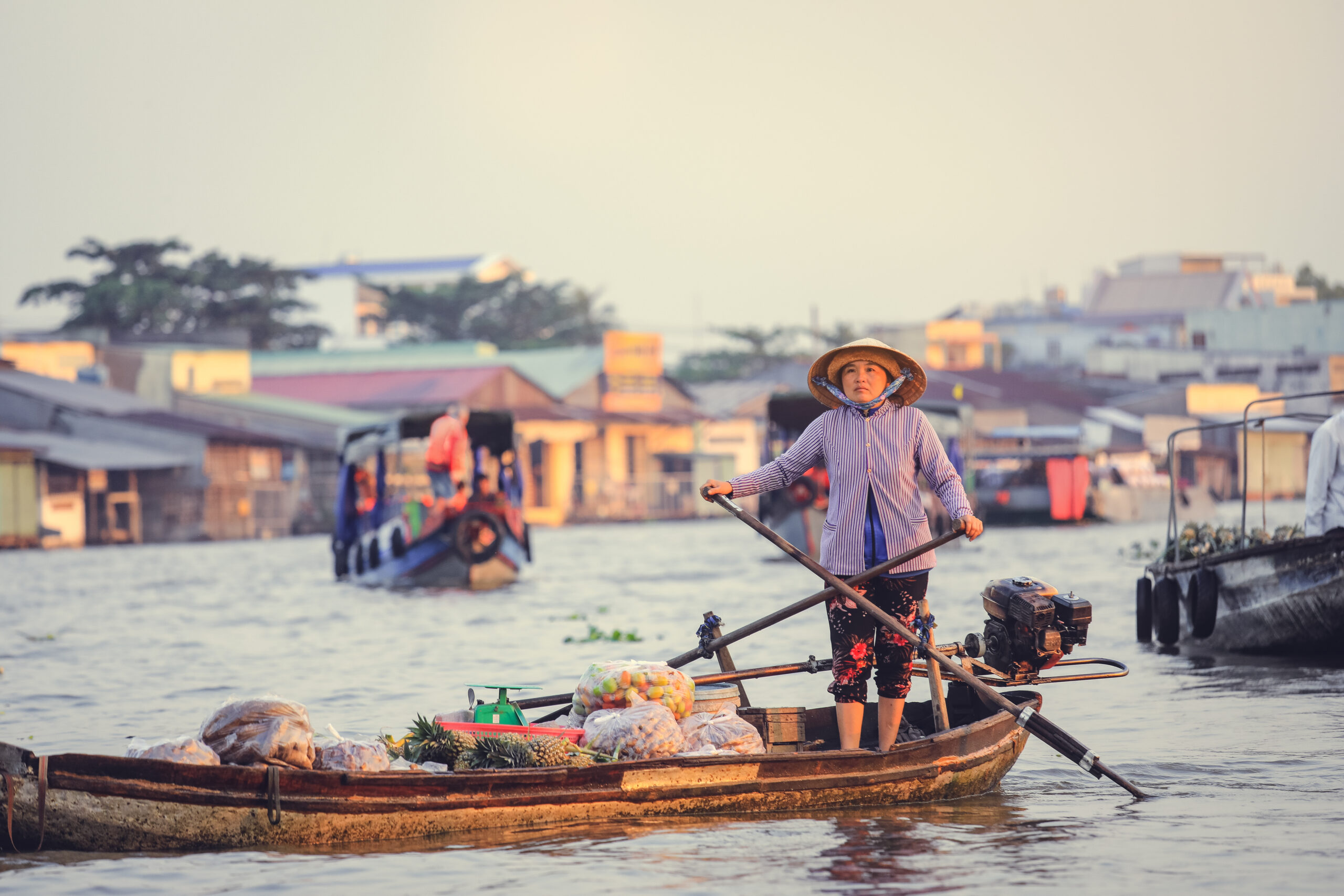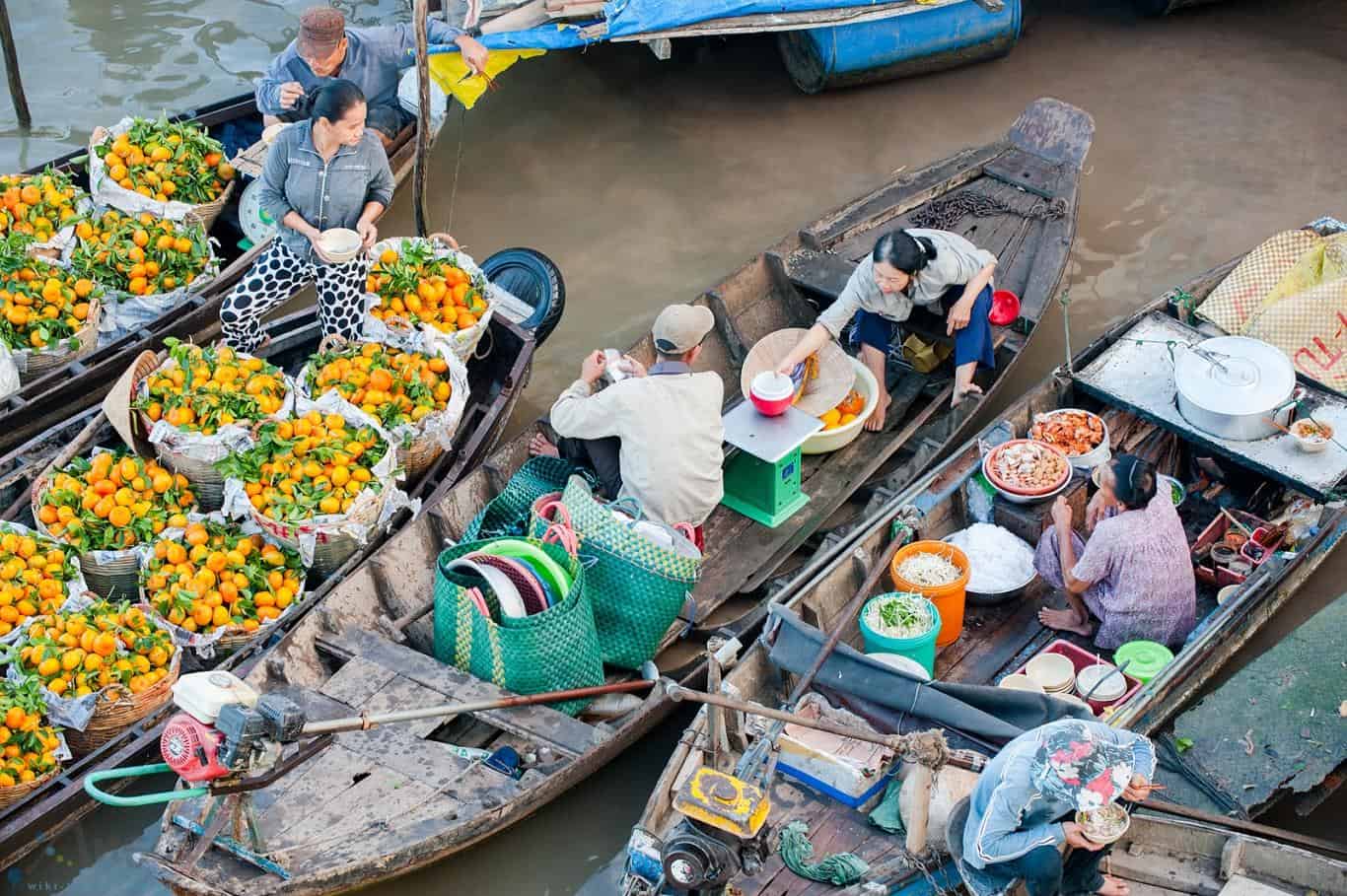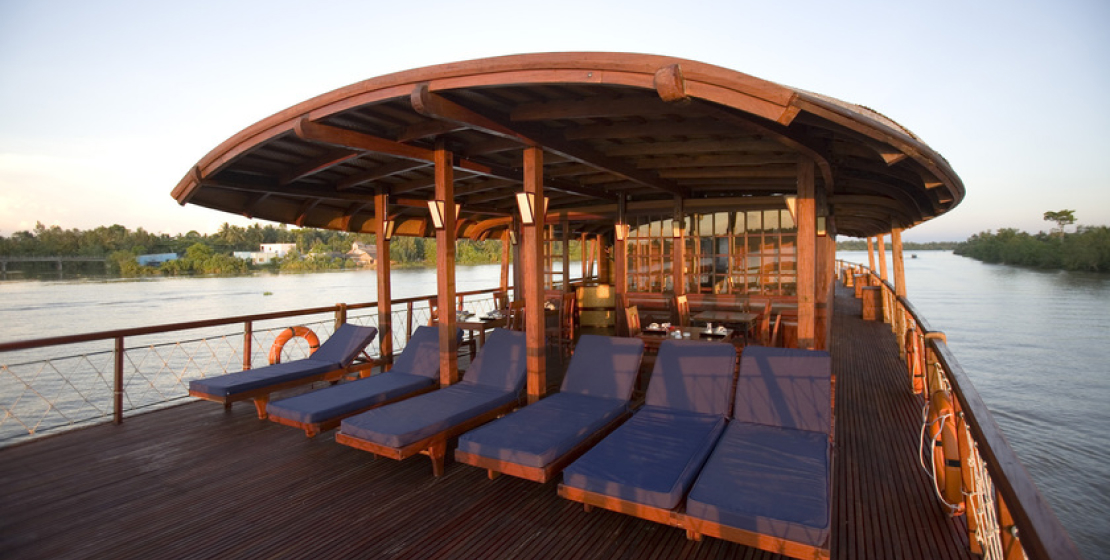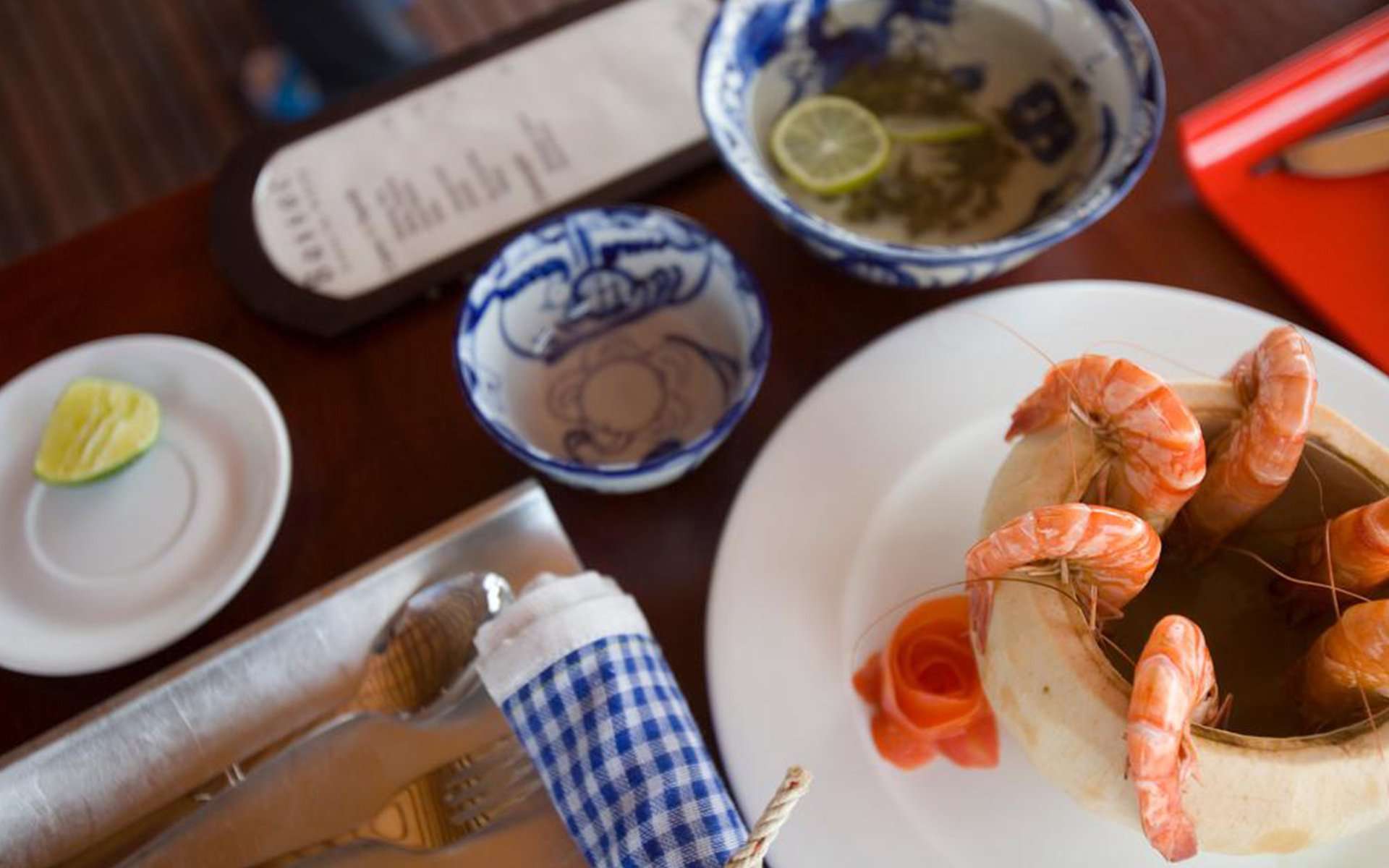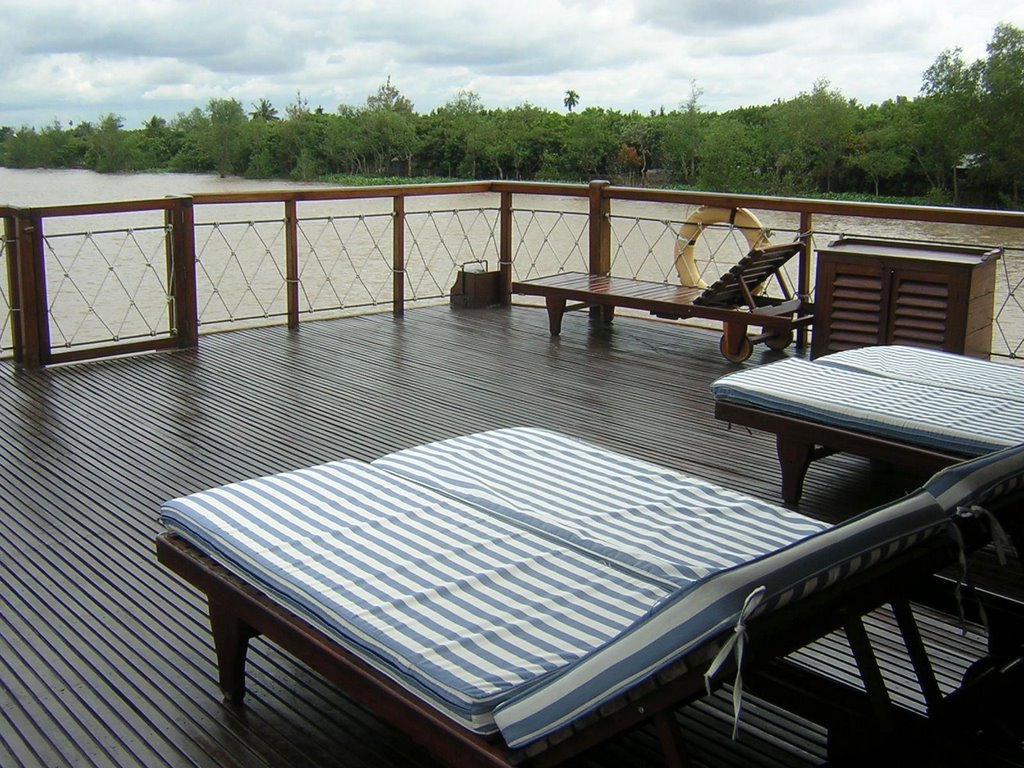THANK FOR YOUR INTEREST
We will contact you soon. How shall we contact you?
Or
Leave us you email
We will contact with you soon. How can we contact you?


HIGHLIGHTS
- Cruise on the Mekong on remarkable La Bassac sampan
- Mekong delta discovering
- Amazing local food served on board
- Cai Rang floating market visit
- Explore the charming town of Sadec
Day 1: SAIGON – CAI BE – LE BASSAC SAMPAN
Breakfast at the hotel.
Departure towards the south and Cai Be city in the Mekong Delta (approximately 115km away/a 2.5-hour drive).
The Mekong River is located in the great South of the country, an exotic area with huge rice paddies, scattered with orchards and creeks. Cai Be is located at the banks of the Tien River (Tien Giang), one of the two large distributaries of the Mekong River.
Before reaching Cai Be pier, you will get to visit a Caodaist Temple. Caodaism is a religion that was founded in the 1920s by a Vietnamese official. He created Caodaism by combining what was best in the main religions, namely, Christianity, Islam, Buddhism, Taoism, and Confucianism.
Boarding the Bassac (a shared cruise) for an unforgettable 2-day trip on the Mekong. Check-in to your comfortable cabin and enjoy a welcome drink followed by a hearty lunch on board.
Carrying on the cruise along Mang Thit canal, the junk will drop anchor to offer you a nice walk through the village and the meeting of a local family. You will be invited to taste rice alcohol and local specialties such as candied coconut and candied ginger.
Then, back to the cruise to enjoy an appetizer while contemplating the sun fading into the waters of the river.
Dinner will be served when the cruise reaches its anchoring spot for the night.
Overnight on board.
Day 2: CRUISE – CAN THO – SA DEC – SAIGON
Breakfast on board.
Rise and shine. It’s time to witness your cruise reaching the famous Cai Rang floating market in the early morning. It’s the largest and most lively market in the Mekong Delta.
Transfer to a small sampan to visit the market and get an authentic insight into one of the oldest and lively ways of doing business.
Around 9:00, your cruise will reach Ninh Kieu pier in Can Tho town.
De-boarding and exploration of the ancient Binh Thuy house, once used as the set of the movie “Lover”.
Return to Saigon. Along the way, you will make a halt at Sa Dec, the birthplace of prominent novelist Marguerite Duras.
Nowadays, this region is famous for nursing farms of tropical flowers such as chrysanthemum, cosmos, hibiscus, tongues of fire, orchids, etc… Beyond the visual appeal this heavenly scenery represents, it provides flowers for the whole country, as well as for exportation.
Also, you will get to visit a farm located in Tan Quy Dong village.
Finally, you’ll have lunch at a local restaurant in Sa Dec before being transferred back to Saigon. The arrival at your hotel in the city is scheduled for the late afternoon.
Useful Information
Available following schedule (please consult us for details)
From 6 yo till 99 yo
Accomodation in double or twin cabin with all starndard amenities (AC, bathroom, large double bed)
Triple cabin not available



